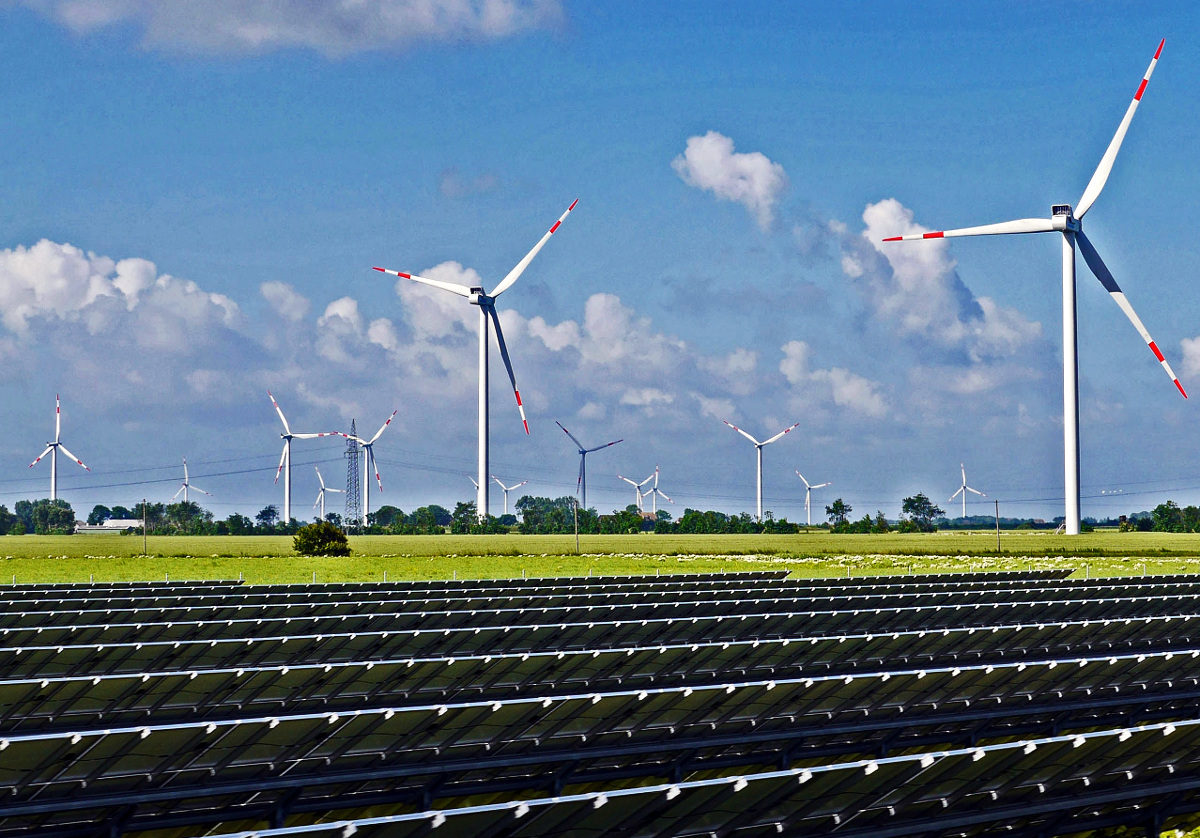India will require $223 billion of investment over the next eight years to meet its goal of wind and solar capacity installations by 2030, according to a new report by research company BloombergNEF (BNEF). The report says this is a tripling of investment flows into new-build wind and solar from the 2014-21 period and requires a scaling up of financing from all the different sources.
India aims to have 500 GW of non-fossil fuel power generation capacity by 2030, compared to 158 GW at the end of 2021. Out of the targeted 500 GW, close to 280 GW will be solar and 140 GW from wind, according to the 2030 optimal generation capacity mix modeled by the country’s Central Electricity Authority (CEA).
The “Financing India’s 2030 Renewables Ambition” report, published in association with the Power Foundation of India, shows that corporate commitments from Indian companies align with India’s 2030 ambition. And these could help India achieve 86% of its 2030 goals of building 500 GW of cumulative non-fossil power generation capacity.
By April 2022, 165 GW of zero-carbon generation had already been installed in the country. The Central Electricity Authority forecasts the country’s reliance on coal to drop from 53% of installed capacity in 2021 to 33% in 2030, whereas solar and wind together make up 51% by then, up from 23% in 2021.
India has consistently ranked among the leading emerging markets covered by Climatescope, BNEF’s flagship report analyzing market attractiveness for energy transition investment. In 2021, the nation ranked first in the power category among 107 emerging markets.
Transparent market mechanisms, supportive policies, and ambitious government targets have attracted many domestic and international players to India’s renewables market.
“To date, the growth of renewable energy in India has been funded by a diverse set of financiers. Debt and equity structures have evolved as the market grew and new risks emerged,” said Shantanu Jaiswal, lead author of the report and the head of India research at BloombergNEF. “India’s ambitious renewable energy targets now require further scaling up of financing with new instruments and learnings from other global markets.”
Yet the scaling up of renewables in India faces regulatory, project and financing risks, with power purchase agreement renegotiation, land acquisition, and payment delays cited as key risks by industry stakeholders surveyed by BloombergNEF. In the short-term, rising interest rates, a depreciating rupee, and high inflation create challenges for renewables financing.
“Scaling up financing to meet 2030 goals requires independent power producers to tap into new or underutilized sources of capital. These could be revolving construction debt, investment infrastructure trusts and funding from retail investors, insurance companies and pension funds,” said Rohit Gadre, analyst on BNEF’s India research team. “Higher funding requirements also need measures that can increase the availability of financing, such as de-risking renewable projects to offering contractual terms that provide greater comfort to investors.”
This content is protected by copyright and may not be reused. If you want to cooperate with us and would like to reuse some of our content, please contact: editors@pv-magazine.com.









1 comment
By submitting this form you agree to pv magazine using your data for the purposes of publishing your comment.
Your personal data will only be disclosed or otherwise transmitted to third parties for the purposes of spam filtering or if this is necessary for technical maintenance of the website. Any other transfer to third parties will not take place unless this is justified on the basis of applicable data protection regulations or if pv magazine is legally obliged to do so.
You may revoke this consent at any time with effect for the future, in which case your personal data will be deleted immediately. Otherwise, your data will be deleted if pv magazine has processed your request or the purpose of data storage is fulfilled.
Further information on data privacy can be found in our Data Protection Policy.